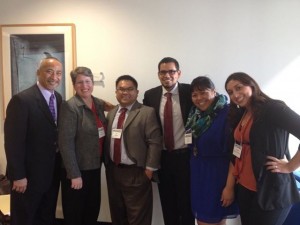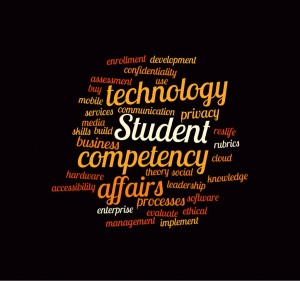One of the benefits of working for a central student affairs IT department is that I get to work and learn about the different business processes of the various units within student affairs. I also know about other teams on campus, like academic departments, who are often our partners regarding the information systems we provide. More significantly, I learn about the subcultures and issues specific to each department and those they serve. Working with these units for many years, I’ve witnessed and participated in these evolutionary changes and business transformations on our campus. These changes span the entire student life cycle, including enrollment management units, student services, academic services, and residential life. Most of these changes have been responses to issues faced by the departments and the university. By looking at when systems were placed into production and the reasons behind them, it’s possible to figure out the campus’s political, cultural, student demographics, and environment, or beyond, at that particular time. An example is the Student and Exchange Visitor Information System (SEVIS), a program to track international students and scholars in the United States. It was a program we had to implement on our campus by 2003 because of a federal mandate. This holistic perspective of student affairs is a unique view that is probably only available to Senior Student Affairs Officers (SSAO) as their positions are at the level where their scopes of responsibilities span multiple units.
Understanding the business processes is the window to my education on what student affairs are. My view of student affairs is that, as a profession, we provide support for students in their personal and learning development while at our institutions. To understand student affairs, knowing what these units do is not enough. One must seek to understand the reasons behind them. This process involves learning about student development theories, the history of higher education and student affairs, administration, governance, professional competencies, and topics specific to each section of student affairs. Because I did not attend a graduate program in student affairs and higher education, this process has been through self-directed learning, most of which comes from reading textbooks, journals, social media, and materials I can get my hands on.
To get a broader perspective of student affairs meant extending my experience and knowledge beyond UCSB student affairs, where I work. Social media has made it easier to connect with colleagues from other institutions. It is through social media that I’ve developed my Personal Learning Network (PLN). I work for a research university, and it’s been enlightening to learn from colleagues from community colleges, small liberal colleges, private, and other public institutions. While the theories and topics I read in textbooks may have come from decades ago, the lessons I learn from my other colleagues are present and often involve discussions about the future of higher education and student affairs. I even recently had the opportunity to visit another campus to do an external review of a student affairs IT department, which further gave me a different perspective.
Learning about student affairs through IT may not be the conventional way, but I’ve come to appreciate the value of my experience working in IT when learning about student affairs. I also realized a long time ago that I needed to combine my practical experience with theories to understand student affairs fully. It’s an exciting time in higher education, and technology is a significant component and a driver of the changes happening in our field. Social media, mobile, cloud, big data, and distance learning are technologies that have introduced new issues and opportunities to students and student affairs staff as well. It’s fun to learn these new technologies, but it is essential to understand the implications behind using them. What do these technologies mean when it comes to how we perform our work, how we communicate with students, and how do they impact student development and learning? Working in student affairs, IT is an excellent place to be a witness and be part of these changes.


